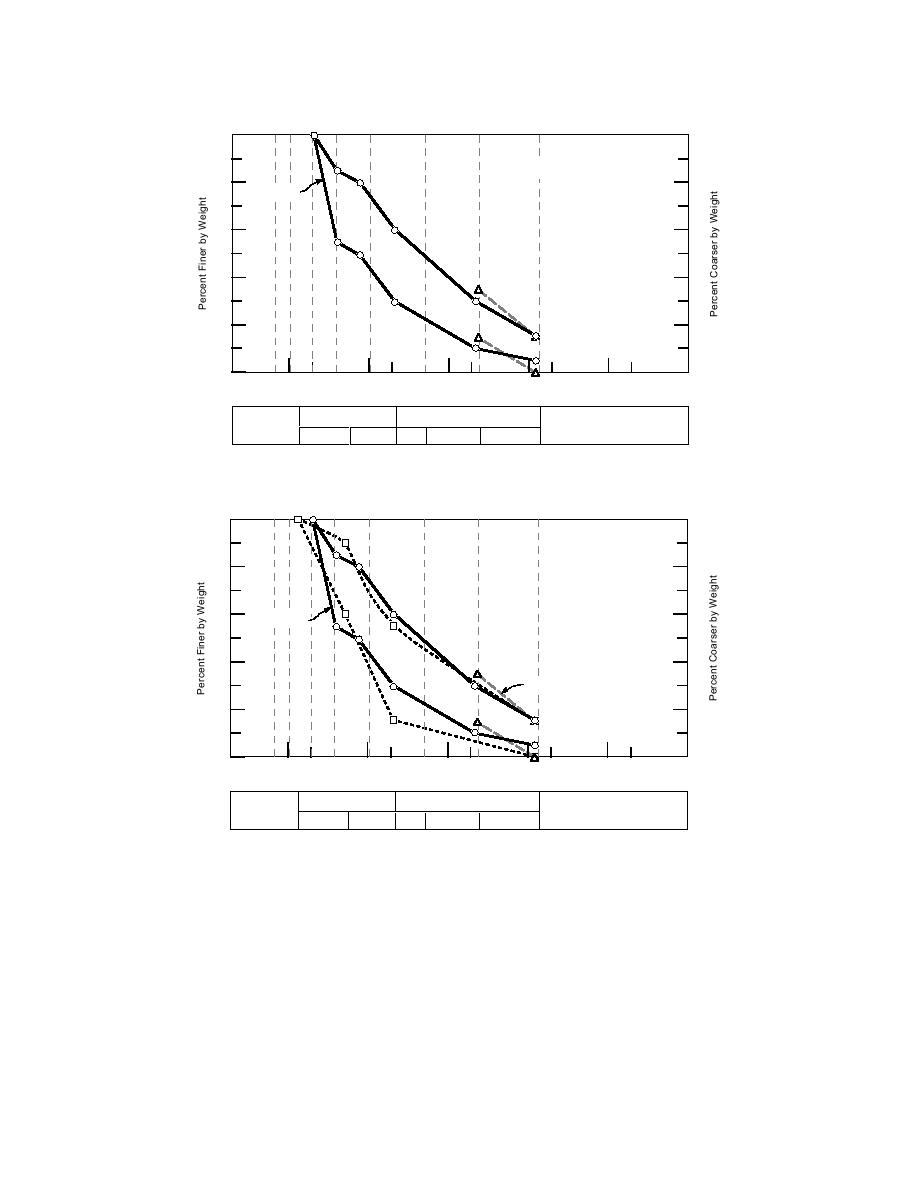
U.S. Standard Sieve Numbers
Hydrometer
6" 4"
2"
1"
10
40
200
3/8"
100
0
P-210 Caliche Base Course
80
20
P-208
60
40
40
60
20
80
100
0
100
10
1
0.1
0.01
0.001
Grain Size (mm)
Gravel
Sand
Cobbles
Silt or Clay
Coarse
Fine
C'rse
Medium
Fine
d. P-210 caliche base course.
U.S. Standard Sieve Numbers
Hydrometer
6" 4"
2"
1"
10
40
200
3/8"
100
0
P-212 Shell Base Course
80
20
60
40
P-208
40
60
P-210
20
80
100
0
100
10
1
0.1
0.01
0.001
Grain Size (mm)
Gravel
Sand
Cobbles
Silt or Clay
Coarse
Fine
C'rse
Medium
Fine
e. P-212 shell base course.
Figure 1 (cont'd). Grain size distribution limits.
caliche to form a weak acid, which then attacks
plotted in Figure 1d for comparison. Caliche
the material. Also, since caliche may have minute
(CaCO3 or MgCO3), also known as calcrete, is
pores, the amount of fines in the base course may
more common in the hot, semiarid regions of the
not be significant enough to cause water to be
U.S., such as Texas and Arizona (Hunt 1983). Cal-
drawn to the freezing front.
iche is considered a transitional limestone. This
material may be hard or soft, depending on how
it was deposited. Slight cementation of the base
P-211 lime rock base course
course may take place because of the carbonates
P-211 lime rock base course is made with
(calcium or magnesium) present. Surface water
fossilliferous limestone (containing abundant
entering into the base course can react with the
seashells). The material is expected to show no
4



 Previous Page
Previous Page
